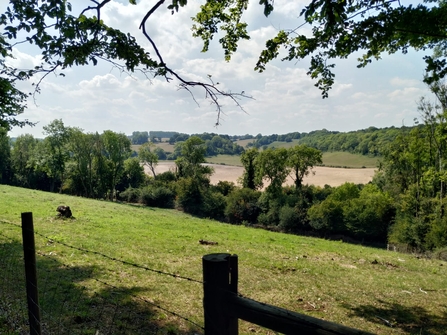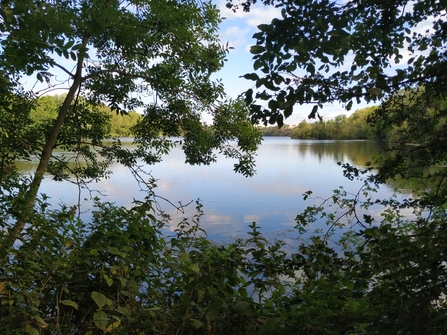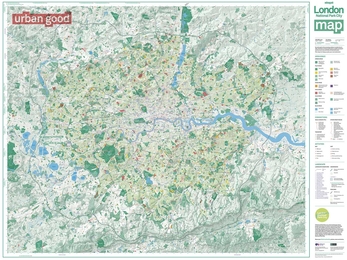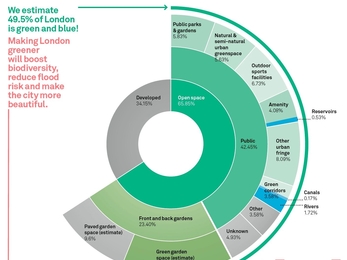UK National Parks
The National Parks and Access to Countryside Act which passed in 1949 led to the creation of 15 National Parks in the UK and by 2016, 144 local National Parks in London were created according to National England. 37 reserves are cared for and maintained by the London Wildlife Trust where all the aims are to conserve the heritage of these areas and promote public enjoyment and understanding of them.
A green city
London is around 50% green and blue space with 8.5 million trees and 14,000 species of wildlife (as of May 2019). It has 3,000 parks, 37 of which are Sites of Special Scientific Interest and two National Nature Reserves. This is evident by the pie chart below from Charlie Peel from Urban Good, that 65.85% of London has open space where 43% is open to the public and around 20% of it happens to be either; natural urban greenspaces, outer urban fringe/green belt or nature reserves. This percentage shows that these areas cannot be altered or changed to start urbanising and therefore, cities like London could see itself become a National Park in the future.




